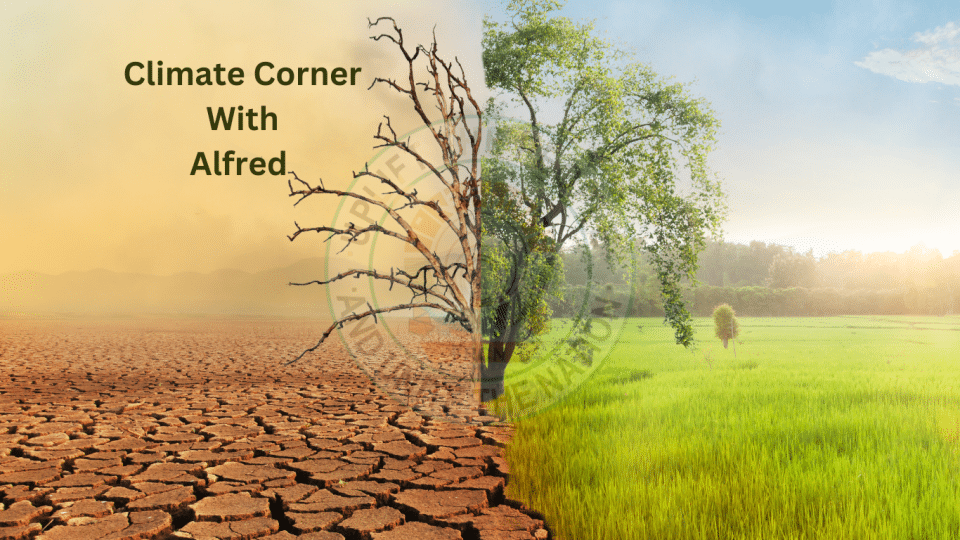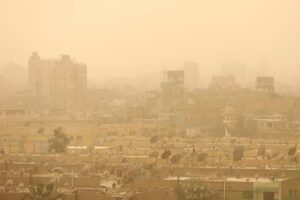Climate terminologies: How well do you know?

Climate is a major existential issue of our times, yet discussions about it are not as thrilling and appealing to average citizens as other issues of life like health, education, politics, the economy, etc.
This is because climate change conversations involve a massive deployment of terms and concepts that are only easily understood by experts.
To address this problem, the United Nations Development Programme (UNDP) put together a resource, “The Climate Dictionary”, to serve as an everyday guide to climate change.
This edition of will highlight some of the terms contained in the dictionary and other sources to further bridge the knowledge gap and achieve a better understanding of this defining issue.

For several people, weather and climate are the same and can be used interchangeably. This is untrue.
While weather is the atmospheric conditions at a particular time in a particular location, including temperature, humidity, precipitation, cloudiness, wind, and visibility, Climate on the other hand is the average weather patterns in a specific area over a longer period of time, usually 30 or more years, which represents the overall state of the climate system. A description of includes information on the average temperature in different seasons, rainfall, and sunshine.
According to National Geographic, weather conditions do not happen in isolation. The conditions in a particular location affect the weather hundreds or thousands of kilometres away. It is equally noteworthy that human activity in the industrial age, and particularly during the last century, is significantly altering our planet’s climate through the release of harmful greenhouse gases.
Climate change affects wildfires by exacerbating the hot, dry conditions that help these fires catch and spread.

The greenhouse gases (also known as GHGs) are gases in the earth’s atmosphere that trap heat. Since the beginning of the industrial era, human activities have led to the release of dangerous greenhouse gases, such as carbon dioxide, methane, nitrous oxide, and fluorinated gases, causing global warming and climate change.
To prevent catastrophic climate change, it is strongly advised that the world’s governments work together to significantly reduce greenhouse gas emissions now and in the coming decades to ensure that global warming is kept below the dangerous threshold of 1.5°C, Chris Mooney et al. wrote in The Washington Post.

Global warming is primarily a result of human activities such as fossil fuel burning, which increases heat-trapping greenhouse gas levels in the Earth’s atmosphere.
Human activities have increased Earth’s global average temperature by about 1 degree Celsius, a number that is currently increasing by more than 0.2 degrees Celsius per decade since the pre-industrial period.
It is feared that certain changes caused by global warming and climate change will become irreversible at some point, even with successful future interventions to drive down average global temperatures.
This is called the tipping point. The IPCC identifies some tipping points that are most likely to be crossed this century. They are the Greenland ice sheet, permafrost, ocean circulation and temperature, monsoons, Amazon Rainforests, Antarctic ice sheets, and coral reef die-offs.
More than 20% of the world’s oxygen is produced by the Amazon rainforest.

To prevent such a devastating eventuality, climate change mitigation must be taken seriously. Mitigation is any action taken by governments, businesses, or people to reduce or prevent greenhouse gas emissions or to enhance carbon sinks that remove these gases from the atmosphere.
This is achievable through transition to renewable energy sources (wind and solar), more efficient energy use, low-carbon or carbon-free transportation modalities, sustainable agriculture, etc.
Apart from mitigation, there is also climate change adaptation. This refers to actions that help reduce vulnerability to impacts of climate change like weather extremes and natural disasters, sea-level rise, biodiversity loss, or food and water insecurity.

Wind turbine facility for clean electricity solar and hydrogen energy storage gas tank.
Adaptation measures that must take place at the community and local levels include planting drought resistant crop varieties and practising regenerative agriculture, improving water storage and use, managing land to reduce wildfire risks, and building stronger d defences against extreme weather like floods and heat waves.
Governments at the national and international levels should embrace large-scale measures, including strengthening or relocating infrastructure from coastal areas affected by sea-level rise, and building infrastructure that can withstand more extreme weather conditions among others.
Communities must develop capacity to anticipate and manage climate impacts, minimize their damage, and recover and transform as needed after the initial shock. This is called climate resilience which is a product of equity and climate justice and prioritises support for people and communities most exposed to its impacts or least able to cope with them.
Resilient Green Plant Grows During Drought

The outcome will be better appreciated if as we build climate resilience, we consciously strive to achieve climate justice.
It is about putting equity and human rights at the core of decision-making and action on climate change. Climate justice compels the countries, industries, and businesses that have become wealthy from activities that emitted the most greenhouse gas emissions to help mitigate the impacts of climate change on those affected, particularly the most vulnerable countries and communities, which often have contributed the least to the crisis.
Climate security refers to evaluating, managing, and reducing the risks to peace and stability caused by the climate crisis.
According to UNDP, an estimated 2 billion people today live in fragile and conflict-affected areas and the number is expected to increase while climate stressors and shocks have increasingly undermined lives and livelihoods, increased competition for natural resources, triggered displacement, and driven food insecurity. Nigeria has witnessed incessant farmers-herders clashes due to increasing desertification, another impact of climate change in the Northern region.
Achieving positive outcomes
Climate finance refers to local, national or transnational financing drawn from public, private and alternative sources of financing that seeks to support mitigation and adaptation actions that will address climate change.
United Nations Framework Convention on Climate Change’s recent analysis on financing needs indicates that developing countries require at least $6 trillion by 2030 to meet less than half of their existing Nationally Determined Contributions, NDCs.
Climate financing is targeted at achieving positive outcomes including decarbonization which means reduction in the amount of greenhouse gas emissions produced in a society and increase in the amount being absorbed. Governments and businesses must rapidly decarbonize by 2030 if the world will meet the goals of the Paris Agreement and keep the 1.5° target alive.

Electric vehicle charging station in Budapest
This calls for meaningful and substantial investments in low-carbon infrastructure and transportation, renewable energy sources, circular economy and resource efficiency, as well as land and soil restoration. It also requires a rethinking of current economic models that are focused on growth at all costs.
Reforestation and afforestation are two of the most effective nature-based solutions in fighting climate change and limiting its impacts, which many people cannot differentiate.
While reforestation is the process of replanting trees in areas that had recent tree cover but where forests were lost, due to wildfires, drought, disease, or human activity such as agricultural clearing, afforestation is the process of planting trees in areas that have not been forested in recent history. Afforestation helps restore abandoned and degraded agricultural lands, prevent desertification, create carbon sinks, and generate new economic opportunities for local communities.
COP28, which is the 28th edition of Conference of the Parties, will take place in the United Arab Emirates in December 2023. It is the annual United Nations conference on climate change, organized under the UN Framework Convention on Climate Change (UNFCCC) since 1995.
The Paris Climate Agreement was signed during the COP21 in 2015. The conference now brings all nations who are parties to the Paris Agreement together to discuss their next steps to combat climate change and further establish legally binding agreements in support of climate action. (Radio Nigeria)









